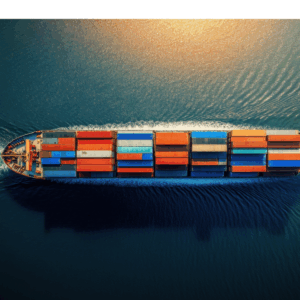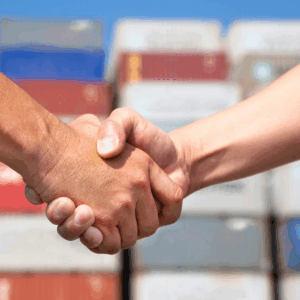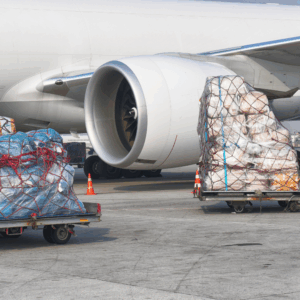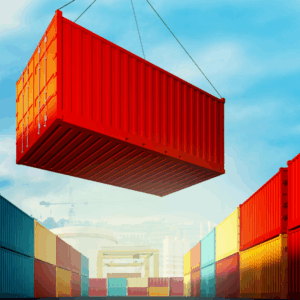Why 2025 Is a Turning Point for Freight Forwarders

These developments impact how freight forwarders manage ocean freight, air freight, and multimodal shipments across the globe. Shippers are now confronted with heightened scrutiny on documentation such as the bill of lading, stricter customs clearance procedures, and density-based freight classifications. All these changes come at a time when transportation costs are rising and tariff uncertainties loom large.
However, businesses that leverage the right freight forwarding services, embrace digital technologies, and diversify their freight shipping modes can maintain compliance, reduce costs, and remain agile in this fast-evolving environment. Understanding these shifts is crucial for any company looking to optimize its supply chain and expand into new markets.
NMFC Classification Changes and What They Mean for Freight Shippers
Understanding the 13-Sub Density Scale
On July 19, 2025, the U.S. National Motor Freight Traffic Association (NMFTA) implemented a significant update to the National Motor Freight Classification system. This update replaces the traditional 11-tier density scale with a more nuanced 13-sub density model. Unlike before, where freight class was often fixed per commodity, the new system bases classification primarily on the density of the cargo—that is, the weight-to-volume ratio measured in pounds per cubic foot.
This density-based classification enhances pricing transparency and accuracy but also requires shippers to precisely measure their shipment’s weight, dimensions, and stowability. Thousands of commodities, ranging from small packages to industrial equipment, have been reclassified under this new system. For instance, refrigerators, which were previously assigned a flat class of 150, now receive a class based on their density: denser products qualify for lower freight classes and thus lower rates.
How Freight Class Impacts LTL Rates and Quotes
Freight class plays a pivotal role in determining the base rate for less than truckload shipments. A lower freight class translates into lower shipping costs per hundred pounds. However, inaccuracies in density calculations can lead to misclassification, resulting in costly re-bills, shipment delays, and disputes between shippers, carriers, and freight forwarders.
Carriers and third-party logistics providers (3PLs) are already auditing shipments to ensure compliance with the new standards. It is essential for shippers to maintain accurate bills of lading and update their transportation management systems (TMS) to reflect the new 13-sub density scale. Freight forwarders play a vital role in supporting customers through this transition by providing expertise, training, and digital tools that help audit classifications and optimize packaging for cost savings.
Action Plan for Shippers and 3PLs 
To navigate these changes effectively, shippers and logistics providers should:
- Conduct a thorough audit of all freight classifications to ensure compliance with the 2025 NMFC standards.
- Invest in dimensioning and weighing tools that capture precise cargo density.
- Optimize packaging and palletization to increase cargo density, thereby lowering freight class and rates.
- Update TMS and warehouse management systems (WMS) to integrate the new classification model.
- Train logistics teams on density-based classification to minimize billing errors and shipment delays.
Trade Policy & Tariffs – How U.S. Measures Are Redefining Supply Chains
The New Tariff Landscape in 2025
The year 2025 also brings renewed focus on trade policies and tariffs, particularly in the United States. The federal department responsible for trade enforcement has reinstated and expanded Section 301 tariffs, imposing duties as high as 100% on certain imports and 10–20% on goods from other regions. These tariffs aim to encourage domestic manufacturing but introduce volatility and complexity into global freight shipping and ocean transportation.
Importers are rushing to accelerate shipments before tariff hikes take effect, causing fluctuations in volume that complicate capacity planning for carriers and freight forwarders. This surge impacts ocean freight forwarders and other international freight forwarders who must manage increased demand for shipping services amid tighter customs clearance. Additionally, customs clearance has become more demanding, with increased documentation requirements, regulatory oversight, and compliance checks for hazardous shipments and dangerous goods, driving up logistics costs.
Freight forwarders are now offering additional services such as cargo insurance and customs brokerage to help shippers navigate these challenges. Managing full container load and less than container load shipments efficiently requires expertise in tariff codes and documentation, especially when coordinating across multiple shipping modes and time zones. Competitive pricing and flat rate options are essential for businesses aiming to ship freight cost-effectively while maintaining compliance with evolving trade policies and international shipping regulations.
Nearshoring, Friend-Shoring, and Supply Chain Diversification Strategies
To mitigate tariff risks and supply chain disruptions, many companies are adopting nearshoring and “China Plus One” strategies. This involves shifting manufacturing to countries such as Vietnam, India, or Indonesia while maintaining some production in China. These strategies aim to diversify sourcing, reduce geopolitical risk, and enhance supply chain resilience.
However, cross-border shipments face more rigorous compliance checks, driver shortages, and customs bottlenecks, especially at major ports and land crossings. Freight forwarders specializing in bonded warehousing, cross-border trucking, and ocean freight consolidation are essential partners for businesses seeking to optimize duty costs and maintain efficient transportation.
By leveraging multimodal logistics, consolidating freight in bonded facilities, and working with experienced 3PLs, companies can better navigate the complexities of global trade in 2025 and beyond.
 Tariff Engineering and Duty Optimization
Tariff Engineering and Duty Optimization
Savvy shippers are employing “tariff engineering” techniques to reduce duties. This might involve adjusting product composition, packaging, or routing to qualify for lower tariff classifications. Partnering with a knowledgeable freight forwarder who understands tariff codes, customs brokerage, and bonded warehouse operations can unlock significant savings and ensure compliance.
Customs, Compliance, and Documentation
U.S. Customs Entry Information
When shipping goods to the United States, freight forwarders typically include a basic customs entry in their door-to-door or port-to-door rates, except for truck-only shipments originating from Canada, which require an additional customs entry fee.
Shippers should also prepare for other costs associated with customs clearance, including:
- Duties and taxes calculated based on commodity type, value, and country of origin.
- Importer Security Filing (ISF) surety bond fees to guarantee compliance.
- Single-entry or annual surety bonds to ensure payment of duties.
- Merchandise Processing Fee (MPF), set at 0.3464% of the cargo’s value.
- Harbor Maintenance Fee (HMF), charged at 0.125% on ocean freight imports.
For frequent importers, annual surety bonds often offer better cost efficiency. Freight forwarders provide guidance on selecting the most suitable bond options based on shipment volume and frequency.
What Is VAT – Value Added Tax?
Value Added Tax (VAT), also known as Goods and Services Tax (GST) in some countries, is a consumption tax applied at each stage of production and sale. For importers, VAT is typically payable at customs clearance. While freight quotes from providers may include VAT on freight charges where required, VAT on the value of imported goods is separate and must be managed by the importer.
Importers should consult their customs brokers to understand how VAT applies in their destination country and plan accordingly.
 What Is a USMCA Certificate of Origin?
What Is a USMCA Certificate of Origin?
The USMCA certificate of origin replaced the former NAFTA documentation for trade within North America. This certificate verifies that goods were manufactured in the U.S., Mexico, or Canada, enabling shippers to benefit from preferential tariff treatment under the agreement.
Failing to provide a valid USMCA certificate can result in additional duties. It is essential to attach this certificate to the bill of lading or equivalent shipping documents for eligible shipments. For products with mixed-origin components, freight forwarders and customs brokers can provide guidance on proper documentation.
Freight Forwarders & Logistics Services – Staying Competitive
The Role of Freight Forwarders in a Shifting Regulatory Landscape
A freight forwarder acts as a critical partner in managing the end-to-end process of freight shipping, including customs clearance, tariff compliance, and coordination across multiple shipping modes such as air freight, ocean freight, trucking, and rail. As regulations tighten and supply chains become more complex, freight forwarders help shippers navigate customs entry requirements, tariff codes, and the documentation necessary to move cargo efficiently.
Digital platforms now offer instant quoting, booking, and real-time tracking for shipments across over 150 countries. Their services cover door-to-door and port-to-door logistics, including customs brokerage and duties estimation, enabling customers to maintain full visibility and control over their freight.
Leveraging Technology for Compliance and Efficiency
Digital technologies have become indispensable in modern freight forwarding. Tools that simplify classification under the new density-based system, while integrated platforms provide real-time quoting, booking, and shipment tracking across air and ocean freight.
By centralizing shipment data and applying predictive analytics, freight forwarders enable shippers to anticipate policy changes, identify cost-saving opportunities, and streamline freight shipping operations. This technological edge is vital for maintaining competitive rates and meeting customer expectations in today’s fast-paced logistics environment.
Ocean Freight, Air Freight, and the Cheapest Way to Ship Overseas
Choosing the right shipping mode is crucial for balancing cost, speed, and cargo volume in international freight forwarding. Ocean freight remains the most cost-effective option for large shipments, especially those classified as less than container load (LCL), where freight consolidation allows multiple shipments to share container space and reduce costs.
Air freight, while more expensive, is ideal for urgent or high-value cargo requiring faster transit times. Many shippers adopt a hybrid approach that combines ocean and air freight to optimize their supply chain resilience and meet diverse delivery requirements.
Frequently Asked Questions
What Is a U.S. Customs Entry Fee and Why Do I Pay It?
A U.S. customs entry fee covers the processing of shipment documentation by customs authorities. Additional fees such as the Merchandise Processing Fee (MPF), Harbor Maintenance Fee (HMF), duties, and surety bonds may apply depending on the shipment’s nature and origin.
What Is a Surety Bond and Do I Need One?
A surety bond guarantees payment of duties and taxes to customs. Importers can choose a single-entry bond for one shipment or an annual bond covering multiple shipments. Annual bonds are generally more cost-effective for frequent importers.
What Is VAT and How Is It Different from a Sales Tax?
VAT is a consumption tax applied at every stage of production and importation. Unlike sales tax, which is final at the point of sale, VAT can often be reclaimed by businesses further along the supply chain.
What Is the Cheapest Way to Ship Overseas?
Ocean freight, particularly less than container load (LCL) shipping, is usually the most economical method for large shipments. Air freight offers faster delivery but at a higher cost.
 What Is a Freight Forwarder and Why Should I Use One?
What Is a Freight Forwarder and Why Should I Use One?
A freight forwarder manages the entire logistics process, including routing, customs clearance, tariff compliance, and documentation. Using a freight forwarder saves time, reduces compliance risks, and often secures better freight rates through partnerships with multiple carriers.
What Is a USMCA Certificate of Origin?
This certificate verifies that goods were manufactured in the U.S., Mexico, or Canada, allowing shippers to benefit from preferential tariffs under the USMCA agreement. Without it, customs may impose additional duties on eligible products.
Turning Disruption Into Opportunity
The year 2025 marks a pivotal moment in freight transportation, as regulatory updates, tariff shifts, and customs compliance requirements reshape global logistics. The new NMFC classification system demands precise cargo measurement and documentation, while evolving trade policies require supply chains to be more agile and cost-efficient.
Freight forwarders, carriers, and 3PLs that adapt quickly by leveraging digital tools, offering diverse shipping modes, and providing knowledgeable logistics services will maintain a competitive edge. Businesses ready to navigate these changes with smart freight shipping solutions that combine air freight, ocean freight, LCL services, and comprehensive international logistics management will thrive.
Don’t let regulations slow down your business—partner with expert freight forwarding services and keep your freight moving forward efficiently and compliantly around the world.



 Tariff Engineering and Duty Optimization
Tariff Engineering and Duty Optimization What Is a USMCA Certificate of Origin?
What Is a USMCA Certificate of Origin?
 What Is a Freight Forwarder and Why Should I Use One?
What Is a Freight Forwarder and Why Should I Use One?
Leave A Comment
You must be logged in to post a comment.